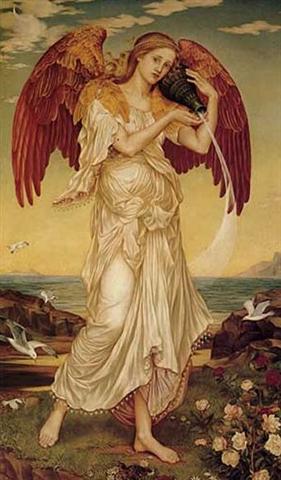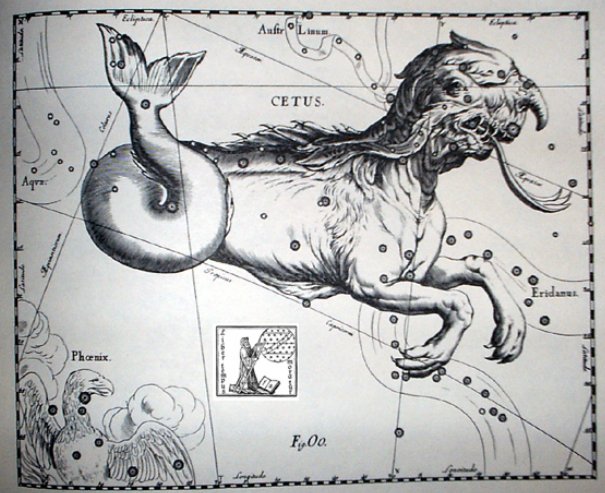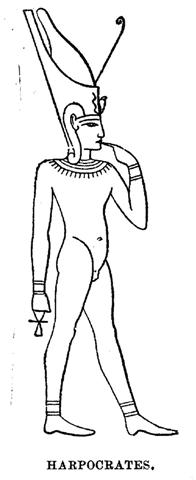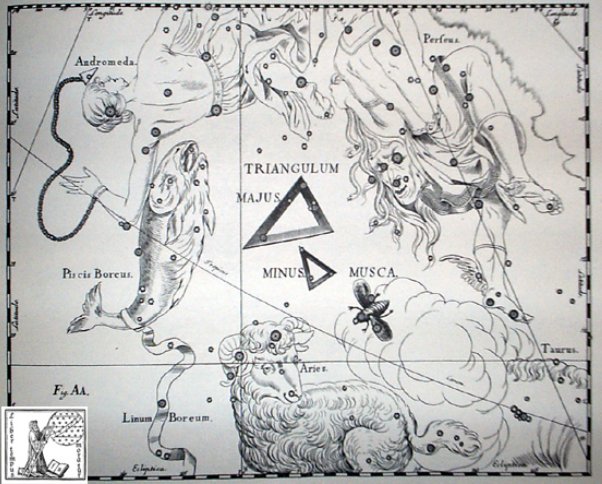189. The Morning Star should rise in the East at Dawn, when traces of the night would still remain in the form of dew.  This had always been true. But the place for the dawn of the year in time-space had changed gradually, with late night star observations coming earlier and earlier.  A pair of disorderly ribbons were floating on the Sea late at night, we can see in this illustration of Hevelius, To. 1. Particle sometimes used with the article in ancient legends; i uto to te hau, the ribbon was in the float. 2. To rise (of the sun) during the morning hours up to the zenith: he-to te raá. Vanaga. 1. Of. T Pau., Ta.: to, of. Mgv.: to, genitive sign. Mq.: to, of, for. 2. This, which. Churchill. Mgv.: To, to make a canoe of planks. Mq.: to, to build a canoe. Sa.: to, to build. Churchill. and then the Head of Ku would push the Ram up from the waves. ... Strassmeier and Epping, in their Astronomishes aus Babylon, say that there its stars formed the third of the twenty-eight ecliptic constellations, - Arku-sha-rishu-ku, literally the Back of the Head of Ku, - which had been established along that great circle milleniums before our era; and Lenormant quotes, as an individual title from cuneiform inscriptions, Dil-kar, the Proclaimer of Dawn, that Jensen reads As-kar, and others Dil-gan, the Messenger of Light. George Smith inferred from the tablets that it might be the Star of the Flocks; while other Euphratean names have been Lu-lim, or Lu-nit, the Ram's Eye; and Si-mal or Si-mul, the Horn star, which came down even to late astrology as the Ram's Horn. It also was Anuv, and had its constellation's titles I-ku and I-ku-u, - by abbreviation Ku, - the Prince, or the Leading One, the Ram that led the heavenly flock, some of íts titles at a different date being applied to Capella of Auriga. Brown associates it with Aloros, the first of the ten mythical kings of Akkad anterior to the Deluge, the duration of whose reigns proportionately coincided with the distances apart of the ten chief ecliptic stars beginning with Hamal, and he deduces from this kingly title the Assyrian Ailuv, and hence the Hebrew Ayil; the other stars corresponding to the other mythical kings being Alcyone, Aldebaran, Pollux, Regulus, Spica, Antares, Algenib, Deneb Algedi, and Scheat ... Currently, according to my assumed era for rongorongo, this Point to watch was evidently defined by heliacal ξ Arietis:
He heaved himself up by way of his front paws on the bank on the other side of the Eridanus river in order to force the Ram to move higher:  Anciently, however, the dawn of the year had been pushed up by the Point of the Southern Horn of the Bull, Tara. 1. Thorn: tara miro. 2. Spur: tara moa. 3. Corner; te tara o te hare, corner of house; tara o te ahu, corner of ahu. Vanaga. (1. Dollar; moni tara, id.) 2. Thorn, spike, horn; taratara, prickly, rough, full of rocks. P Pau.: taratara, a ray, a beam; tare, a spine, a thorn. Mgv.: tara, spine, thorn, horn, crest, fishbone. Mq.: taá, spine, needle, thorn, sharp point, dart, harpoon; taa, the corner of a house, angle. Ta.: tara, spine, horn, spur, the corner of a house, angle. Sa.: tala, the round end of a house. Ma.: tara, the side wall of a house. 3. To announce, to proclaim, to promulgate, to call, to slander; tatara, to make a genealogy. P Pau.: fakatara, to enjoin. Mq.: taá, to cry, to call. 4. Mgv.: tara, a species of banana. Mq.: taa, a plant, a bird. Ma.: tara, a bird. 5. Ta.: tara, enchantment. Ma.: tara, an incantation. 6. Ta.: tara, to untie. Sa.: tala, id. Ha.: kala, id. Churchill
viz. The Heavenly Gate (ζ Tauri),
where in November 6 (310) in the year AD 2022 the planet Mars had been visible close to 121 Tauri:
121 Tauri suggests day number 121 in our Gregorian calendar, viz. May 1 (*41). In my assumed era for rongorongo this was the day when the Sun would have risen together with Bharani (*41.4), the main star in the asterism named Musca Borealis (the Northern Fly):
... From a religious point of view, the high regard for flies, whose increase or reduction causes a similar increase or reduction in the size of the human population, is interesting, even more so because swarms of flies are often a real nuisance on Easter Island, something most visitors have commented on in vivid language. The explanation seems to be that there is a parallel relationship between flies and human souls, in this case, the souls of the unborn. There is a widespread belief throughout Polynesia that insects are the embodiment of numinous beings, such as gods or the spirits of the dead, and this concept extends into Southeast Asia, where insects are seen as the embodiment of the soul ...In the era of Bharani (*41 precessional days earlier than my assumed era for rongorongo) - which era evidently was used by the Arabs in order to fix time during summer - the corresponding day number 121 would have coincided with where the Sun had risen together with the first of the 3 stars in the Belt of Orion (Tau-toru). Mintaka (*82.4) - *41.4 (Bharani) = *41.0 ("May 1). There were 3 wise men, Balthassar, Melchior, and Caspar, who saw a star rising in front (a-head), ... According to an etiological Hawaiian myth, the breadfruit originated from the sacrifice of the war god Ku. After deciding to live secretly among mortals as a farmer, Ku married and had children. He and his family lived happily until a famine seized their island. When he could no longer bear to watch his children suffer, Ku told his wife that he could deliver them from starvation, but to do so he would have to leave them. Reluctantly, she agreed, and at her word, Ku descended into the ground right where he had stood until only the top of his head was visible. His family waited around the spot he had last been, day and night watering it with their tears until suddenly a small green shoot appeared where Ku had stood. Quickly, the shoot grew into a tall and leafy tree that was laden with heavy breadfruits that Ku's family and neighbours gratefully ate, joyfully saved from starvation ...and probably this was Venus as Morning Star: ... The son of Zebedee and Salome, James is styled 'the Greater' to distinguish him from the Apostle James 'the Less', who was probably shorter of stature. We know nothing of St. James's early life. He was the brother of John, the beloved disciple, and probably the elder of the two ... James' emblem was the scallop shell (or 'cockle shell'), and pilgrims to his shrine often wore that symbol on their hats or clothes. The French for a scallop is coquille St. Jacques, which means 'cockle (or mollusk) of St. James'. The German word for a scallop is Jakobsmuschel, which means 'mussel (or clam) of St. James'; the Dutch word is Jacobsschelp, meaning 'shell of St. James' ... The scallop shell is represented in the decoration of churches named after St. James, such as in St James' Church, Sydney, where it appears in a number of places, including in the mosaics on the floor of the chancel. When referring to St James, the scallop shell is represented with convex perspective. Referring to Venus the perspective is concave ...
|
||||||||||||||||||||||||||||||||||||||||||||||||||||||||||||||||||||||||||||||||||||||||||||||||||||||||||||||||

















